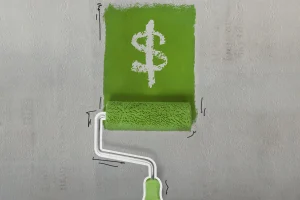
Investment in green energy isn’t just about fulfilling social responsibility; it could also present long-term returns. Many corporations are taking steps to reduce their carbon emissions, leading to greater demand for renewable power sources.
However, investors should be mindful of the risks involved with investing in green energy; having a diversified portfolio may help mitigate some of those risks.
Risks
Renewable energy investments have seen steep price drops over the last decade, making them one of the most appealing investments on offer. Yet many investors remain unconvinced that renewables can bring climate benefits; rather they require high returns on their investments to justify taking the risk.
Smart public policy can reduce both required return and risk, making clean energy a cost-effective alternative. For instance, policies which allow renewables to compete on an even playing field with traditional power plants without jeopardizing key values could cut ownership costs by over 50%.
Renewable projects may benefit from feed-in tariff structures that offer long term contracts at fixed or above market rates, thereby eliminating much of the price risk that usually accompanies other forms of energy generation. Such de-risking can make it easier for utilities, banks, or other institutions to find investment dollars for renewable projects.
Institutional investors are taking steps to decarbonize their portfolios, with several funds targeting environmental, social and governance (ESG) criteria related to transitioning towards a low carbon economy. These efforts aim to mobilize listed equity investors towards building a more sustainable future.
Opportunities
Growing concern over climate change has created numerous green investment opportunities. Solar panels on rooftops, wind turbines dotted throughout the landscape and electric cars speeding down highways are the most visible examples, but there are other less-obvious options too.
The world requires an urgent transition to low-carbon energy sources. Fossil fuels are rapidly depleting, creating environmental, health, and security risks that must be mitigated quickly. Switching to renewables, energy efficiency measures and other low-carbon strategies such as renewables or efficiency could reduce emissions while supporting sustainable economic development while creating greater equality in global economic systems.
Renewable investments have seen dramatic increases over the last decade as cost-effective energy solutions like hydropower, wind and solar become viable power options. Prior to 2008, hydropower saw the greatest amount of investment followed by wind and then solar. By 2017, solar investments outshone all other low-carbon technologies combined.
Investors seeking exposure to renewable energy investments have two options available to them when investing: direct acquisition through power purchase agreements (PPAs) or funds that provide exposure to various renewable energies and low carbon projects, providing diversification while decreasing volatility.
Other green investing strategies include pollution controls, waste reduction and sustainable agriculture. There are also mutual funds dedicated to water infrastructure as this resource becomes scarcer over time.
Diversification
Green energy refers to renewable and clean energies with minimal environmental impact, like solar or wind power, that have numerous positive economic and social benefits compared to fossil fuels such as supporting sustainable development, creating jobs, or helping lower energy costs for businesses or consumers.
Green energy production includes wind, solar and hydropower technologies which do not emit greenhouse gases or cause air pollutants; their replenishability also makes them cost-effective alternatives to fossil fuels.
Transitioning to renewable energy will require significant investments over the next several years, but will pay dividends in terms of reduced pollution and climate impacts, potentially saving $4 trillion per year compared with fossil fuel energy sources. Such an investment is crucial in order to reach global goals for net-zero emissions by 2050 while simultaneously strengthening resilience and energy security.
To minimize their risks, investors need to balance their risk/return profiles. Diversifying portfolios can improve project returns and bring greater customer value; this requires advanced portfolio and risk management capabilities. Furthermore, power engineers must be trained on working with emerging technologies while understanding evolving power markets – this will allow them to develop business capabilities and reporting frameworks covering profitability as well as environmental impacts.
Tax implications
Renewable energy growth requires significant private investment and sustained government support; these goals don’t need to be in conflict; they can both be pursued concurrently.
The US government provides several indirect subsidies to encourage investment in green technology. One such subsidy is the Investor Tax Credit (ITC), which grants a dollar-for-dollar credit on qualified expenses associated with renewable energy property until 2032 before gradually declining over time to 26% for investments made in 2033 and 22.6% in 2034 before finally disappearing altogether by 2035.
Additionally, the federal Residential Clean Energy Credit provides homeowners with a tax credit equal to 30 percent of expenditures related to installing renewable technologies like solar PV panels or wind turbines in their home; geothermal heating/cooling; fuel cells or battery storage technologies are eligible. Furthermore, ITC allows taxpaying individuals to immediately expense certain energy upgrades like upgrading to LED lights which use 85 percent less electricity than traditional incandescent bulbs.
State and local governments have introduced incentives to foster renewable energy production, leading the US energy generation industry to experience increased capital investments into renewable power plants despite price volatility and regulatory uncertainties. Jason Wade of Grant Thornton State and Local Tax, and Kevin Herzberg, National Indirect Tax Practice Leader discuss sales/use taxes applicable to renewable generation facilities, energy storage devices and electric vehicle charging stations in an article for Tax Notes State magazine.









